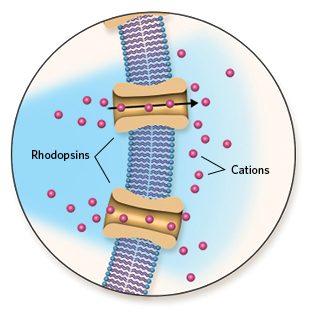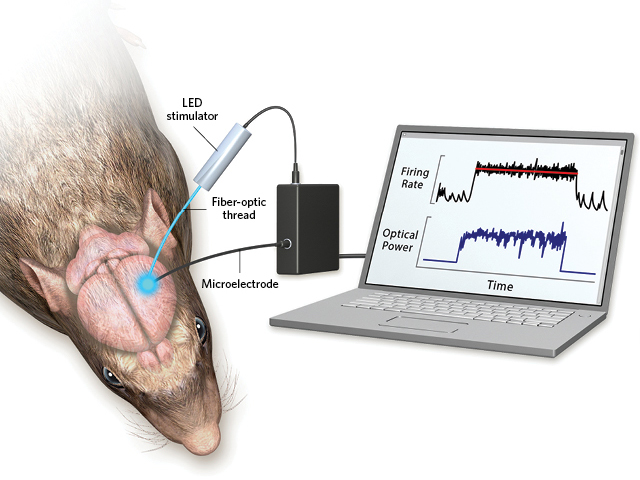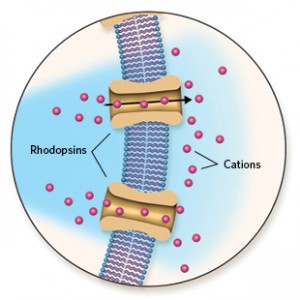Optogenetics Feedback Loop Refines Control of Neuronal Activity


Neurons are activated or inhibited with light through the LED stimulator. Microelectrodes measure local changes in voltage and send the information to the computer, which compares it with the intended intensity range and adjusts the light stimulation accordingly. Credit: George Retseck
Scientists from Georgia Tech and Emory University have developed an optogenetics technique that allows to fine-tune mice brain activity by receiving neuronal feedback in real time and adjusting the luminic stimulation accordingly. The researchers constructed a device called optoclamp, that connects the brain with a computer that controls the neuron firing rate. The study has been published in the journal eLife.
Neurons communicate by firing electrical impulses out of their bodies and to other neurons or organs. Optogenetics is a technique that seeks to control brain activity in vivo by acting with light upon modified neurons and to record the firing activity. Tipically, mice are genetically modified to express light-sensitive proteins that will act as ion channels in brain cells. When channelrhodopsin-2 is activated by blue light, it excites neuronal activity, whereas halorhodopsin is sensitive to yellow light and inhibits neuronal communication. Different types of light can be directed to the desired groups of cells to open or close their ion channels, controlling the information they transmit. The aim is to analyze the animal behavior, in real time, in response to the artificial neuronal changes. Precise control of small groups of cells, however, has been elusive so far, as this level of command requires feedback from the same cells in real time. Neuron activity should be known at any moment, so that the optogenetic device could compare that level of activity with the level the researchers want to implement, and act accordingly.

Membrane-embedded, light-sensitive channelrhodopsins are expressed in the neurons. When illuminated with blue light, they open the ion channel, activating neuron firing. Credit: George Retseck.
The optoclamp acts as a thermostat of neuron firing
Dr. Potter and his team developed a new device, the optoclamp, that registers neuronal activity in real time and allows to adjust to it with high precision. The researchers installed microelectrodes near neurons that read the electrical signal of the brain cells after being stimulated with light. The signal is sent to a computer that analyzes the signal intensity and compares it with the intended one. The computer adjusts the intensity of the light accordingly, and the whole process takes less than 10 milliseconds. The system can be automatically maintained for 24 hours.
The optoclamp can be used to control the firing of neurons that are treated with a drug that might alter neuron activity. It also allows to ignore environmental inputs that might be perceived by, for example, the animal´s whiskers and would normally modify neuron activity.
Source: TheScientist
